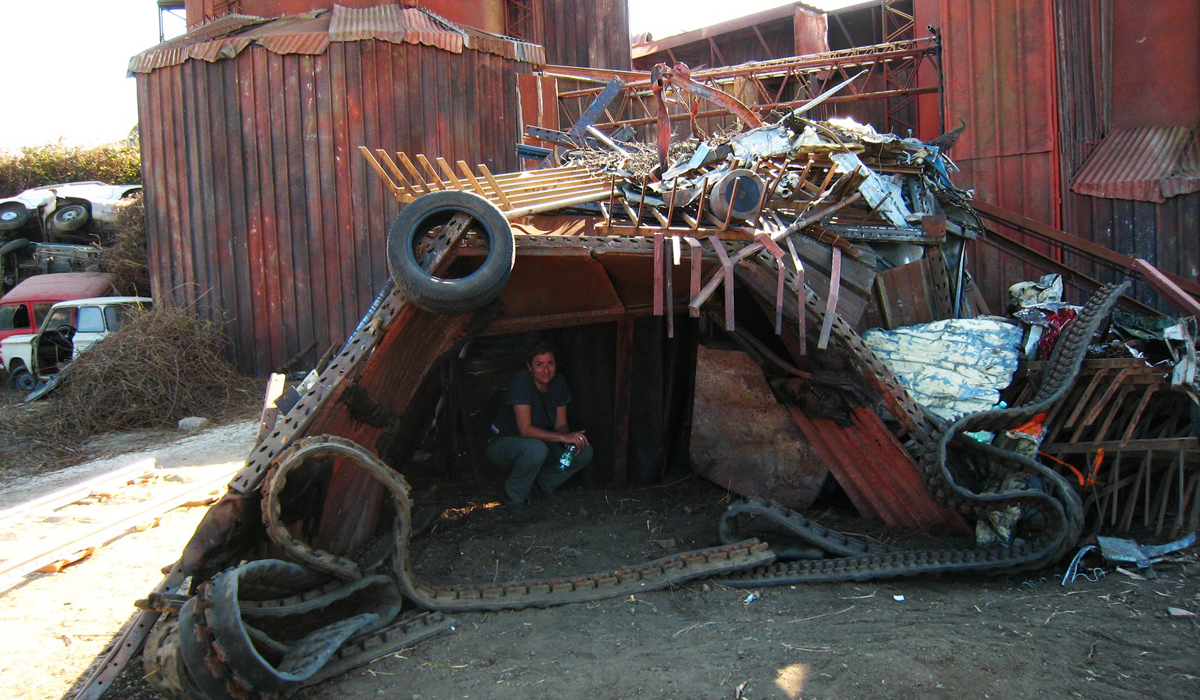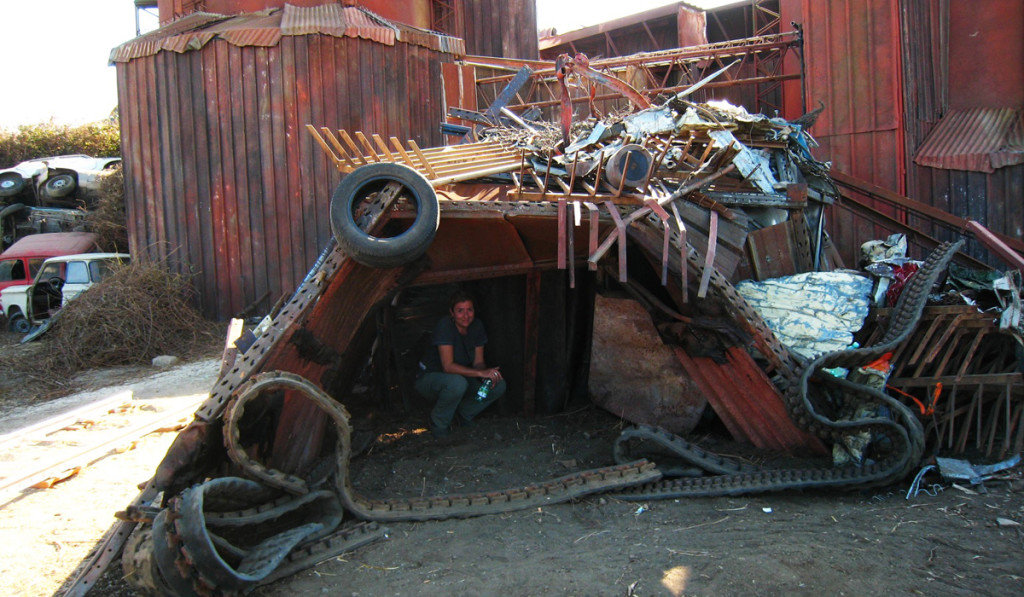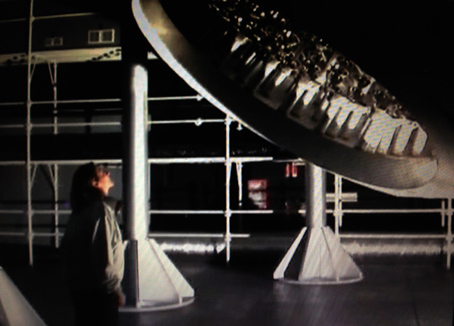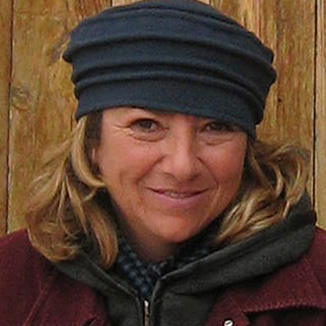Marta Maffucci: si laurea in Architettura all’Università di Roma nel 1984 e nel 1985 si diploma in Scenografia alla Scuola Nazionale di Cinematografia.
Dal 1993 firma le scenografie di numerosi film tra cui: Caro Diario di N.Moretti, Diaz. Non pulite questo sangue di D. Vicari, ottenendo numerosi riconoscimenti e premi. Architetto Paesaggista si aggiudica il premio Lausanne Jardins nel 2000. Supervisore e insegnante di scenografia cinematografica e televisiva presso la Scuola d’arte Cinematografica Gian Maria Volonté. Realizza workshop di scenografia cinematografica presso l’Università di Guadalajara in Messico, il TEC di Monterrey e l’Università Cà Foscari.
Marta, come è iniziato il tuo passaggio dal mondo dell’architettura reale a quello della scenografia cinematografica?
Il passaggio è iniziato ai tempi del liceo e nei primi anni dell’università, attraverso la realizzazione di piccole scenografie per il teatro d’avanguardia e spettacoli di danza moderna. Erano gli anni mitici dell’Estate Romana promossa ed inventata da Renato Nicolini.
In quegli anni la sperimentazione culturale ebbe una forte accelerazione e, per la mia generazione, fù un vero e proprio banco di prova. La Facoltà di Architettura di Roma per qualche anno fù un concentrato di vitalità e creatività a vasi comunicanti tra le più svariate discipline e arti.
Mentre finivo gli studi in Architettura iniziavo al Centro Sperimentale di Cinematografia e, per qualche anno, ho tenuto i piedi in due scarpe, visto che da anni lavoravo già negli studi di architettura come disegnatrice e poi come progettista junior.
Quanto ti è stata di aiuto la formazione da architetto?
La formazione da architetto mi accompagna da sempre in qualunque progettazione e mi ha permesso di avere metodo e spalle larghe di fronte ad ogni nuovo tema da affrontare. A questo si è aggiunto lo studio della progettazione scenografica.
Sono mestieri molto simili ma, ognuno, con campo di applicazione diverso, uno si riversa nell’altro completandolo.
Essere una donna ti ha creato qualche svantaggio nel mondo lavorativo in cui operi?
Non è mai stato uno svantaggio, anzi credo un punto di vista privilegiato e complesso dal quale partire.
Qual è stato il progetto architettonico che ti è rimasto nel cuore?
Più che le realizzazioni mi rimangono nel cuore le partecipazioni ai concorsi, che sono sempre occasione di sperimentazione del pensiero e collaborazioni con colleghi di aree diverse.
Quello scenografico invece?
Il film che ho più profondamente amato è Diaz, per la complessità del tema, del suo studio e la dimensione della realizzazione scenografica.
Cosa consigli a chi vuole investire nei propri progetti e intraprendere una carriera come la tua?
Consiglio di scegliere sulla base delle proprie passioni, di non abbandonare mai il corso degli studi intrapresi, di frequentare scuole serie e legate a realtà lavorative.
C’è sempre spazio per chi si impegna e crede nelle proprie forze senza scorciatoie.
Pensi che nell’Italia di oggi ci siano ancora dei pregiudizi nei confronti di una donna architetto?
Non credo, dipende dall’energia e dalla volontà individuale. Gli esempi sono tanti, non dobbiamo diventare uomini per essere credibili!
[irp posts=”5261″ name=”Architettura e Cinema”]
[divider]ENGLISH VERSION[/divider]
Marta Maffucci graduated in Architecture at the University of Rome in 1984 and in 1985 in Set Design at the National School of Cinematography.
Since 1993, she has been signing the scenic design of many movies and won numerous awards and prizes including the Lausanne Jardins award in 2000. She is supervisor and teacher at the Scuola d’Arte Cinematografica Gian Maria Volonté and produces film set workshops at the University of Guadalajara in Mexico, the TEC of Monterrey and the University Ca’ Foscari of Venice.
Marta, would you tell us how has the transition from the real world of architecture to that of the film sets started?
The transition started during the high school and the early university years, through the creation of little sets for the avant-garde theater and modern dance performances. Those were the years of the Estate Romana promoted and invented by Renato Nicolini. During those years, cultural experimentation had a strong acceleration and, to my generation, it was a real test bed. The Faculty of Architecture in Rome, for a few years, had been a concentrate of vitality and creativity among various disciplines and arts. While I finished my studies in Architecture, I started at the Centro Sperimentale di Cinematografia and, for a few years, I have kept my feet in both camps, since I was already working as a designer and then as a junior designer.
How much helpful do you think it was your training as architect?
The training as architect still follow me through any design and has allowed me to have a method and broad shoulders facing every new issue. To this, I added the study of scenic design. They are very similar but, each has a different area of expertise; one pours into the other supplementing it.
Being a woman was a disadvantage in the world in which you operate?
No, it has never been a disadvantage, but I believe it is a privileged point of view to start.
What was the architectural project that stands still in your heart?
More than the creations, I have kept in the heart the participations at the contests, which are always chances of experiencing and collaborations with colleagues from different areas.
What about the scenic project instead?
The movie I loved the most is Diaz, because of the complexity of the subject and its scenic realization.
What would you suggest to anyone who wants to invest in his own projects and to pursue a career like yours?
I suggest choosing on the basis of your own passions; never abandon the course of the studies undertaken, to attend good schools, linked to working realities. There is always room for those who work and believe in their own strength without shortcuts.
Do you think that nowadays still there are prejudiced against a woman architect?
I do not think so. It depends on the energy and the individual will. There are many examples; we must not become men to be credible!
Traduzione a cura di Daniela De Angelis





